From Oslo 1955 to Whistler 2025: Celebrating 70 Years of FIL Luge World Championships
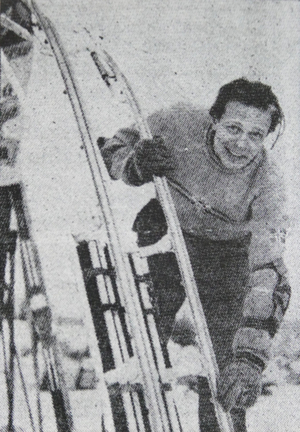
Whistler (01 Feb 2025) When the luge family gathers in Whistler for the 53rd World Championships, it's not just about winning medals. This year's event will also serve as a symbolic and historic birthday celebration. Seventy years ago, in early February 1955, the first FIL World Championships were held in Oslo.
It seems hard to believe, but it was indeed at the legendary Holmenkollen – a mecca for ski jumpers and cross-country skiers – that the Luge World Championships were born on February 5-6, 1955!
Initially planned as the 13th European Championships, Norway’s luge association "Norges Akeforeningen," founded in the late 19th century, requested the honor of upgrading the event to a world championship in celebration of their 60th anniversary. Despite the late and bold request, the Section de Luge of the then FIBT (Fédération Internationale de Bobsleigh et Tobogganing), led by visionary Bert Isatitsch, approved this historic "birth" in 1955.
Two years later, in 1957, the luge athletes separated from the world federation, becoming independent, with Austrian school director Bert Isatitsch serving as the first president of FIL for a uniquely long 36 years until his sudden death in 1994, shortly before Lillehammer, “crown prince” Josef Fendt inherited the role.
The eras of Isatitsch and Fendt made artificial track luge an Olympic discipline in 1964 and spread it worldwide while maintaining its economic stability and media popularity. This legacy continues successfully under the leadership of Einars Fogelis since 2020.
Who knows whether there will be time to raise a glass of champagne “in memory” on the 70th anniversary of the luge World Championships in Whistler. The author of this article will do so, having been involved in luge as a television journalist since 1964/65. And, in 1994, at the Winter Olympics in Lillehammer, he even got to know the first world champion from 1955!
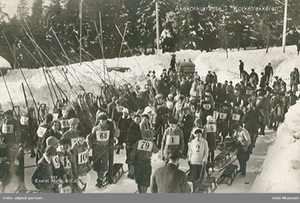
It sounds unlikely, but it was a Norwegian! The Second German Television channel was in Oslo at the time, filming a short story with Anton “Tony” Salvesen (24.10. 1927 - 24.07.1994). They also filmed at the “Tatort 1955”, the “Korketrekkeren”, the 1500-meter-long World Cup track. It was so named because its 16 wide and flat curves resembled the coils of a corkscrew. It was a natural track made of snow and ice. With a gradient of 9.4%. The key points were secured with wooden boards.
30,000 spectators, according to the records, lined the route on the two days of the race. Among them was Norway's Crown Prince Olav V, the future king and father of the current monarch, King Harald V (87), who is also a keen sportsman.
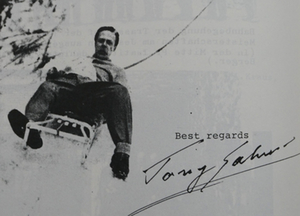
With Tony Salvesen, who steered his metal sled with a four- to five-meter-long wooden pole from behind (!) – like all Scandinavians at the time – and thus had an advantage in the wide curves, an absolute outsider won. He had already become Norwegian champion, but internationally he was an absolute “unknown” who snatched the gold away from the favored Austrians at the first World Cup.
The race times were interesting, but please don't compare them to the present day: Salvesen won after four races in 8:08.59 minutes, ahead of Josef Thaler (8:10.53) and Josef Isser (8:15.21).
It should be mentioned that most sleds at the time were predominantly wooden “Gasser” from Austria or homemade. Still without bucket seats, but with canvas seat mats as a base; in addition, hand steering with a leather belt. No aerodynamics yet: one sat on the sled, slightly leaning backwards; one made the steels fast with wax or heated them.
The career of the surprise World Champion of 1955 ended right after the title competitions. Salvesen was an international shipbroker. “I had to devote myself entirely to this profession and had my office in New York for many years,” the first world champion explained in an interview about his early retirement.
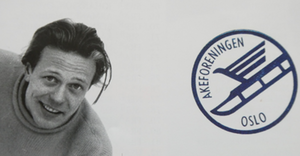
Salvesen, a true gentleman, only made an appearance at an international event one more time: in 1979 at the World Championships in Koenigssee - as a guest of honor of the FIL and to present medals to the younger generation, together with the other World Champions from 1955, all of whom came from Austria, namely Carla Kienzl and the doubles Hans Krausner-Joseph Thaler.
The story is told about the latter in the history books: at the triumphant World Cup reception in his native luge stronghold of Imst, the mayor offered him a choice of two honorary gifts: either a huge silver cup or a piece of building land...
It would seem an easy choice to take the property; but “Seppl” Thaler decided, hard to believe, on the trophy. His reasoning: “because we didn't receive one in Oslo.”
Incidentally, the Korketrekkeren is still “alive” today. With its start not far from the Holmenkollen station Frognerseteren and the finish near the Midtstuen station, sledding on the old World Cup track is an ideal and popular family winter activity. Bring your own sled or rent one from the “Akeforeningen 1905” club, which has 300 sleds available. On some weekends, up to 5,000 sleds are said to have been used! This is also because the Holmenkollen metro makes it possible to get back to the top of the hill so quickly.

To round off the 70th anniversary of the World Championships, it is the chronicler's duty to say that of the twelve medal winners back then – eight of them from Austria alone – only two are still alive. These last contemporary witnesses are the eternally young Fritz and Marianne Nachmann from Kreuth at Lake Tegernsee.
Friends since 1955 and married since 1957, they talk enthusiastically about the event 70 years ago, in which they both won bronze medals. Fritz (95), a trained carpenter, competed in the doubles with his “backpack” Joseph Strillinger, while Marianne (93), then still Bauer, the trained chef, competed in the women's event.
Both lugers from the RC Rottach-Egern remember: “There were ten of us Germans, from Bavaria, the Black Forest and the Harz Mountains; traveling by train and ship for more than a day to Oslo; staying in four-bed rooms at the ‘Frognerseteren Hotell’ not far from the railroad and ... still dreaming today of the sensational breakfast buffet that pampered us, only shortly after the meager food ration time in post-war Germany. And there was a great camaraderie among the eighty or so of us lugers from eight different countries.”
While Marianne Nachmann ended her career early after this major success, raised three daughters and worked as a chef in the Bavarian inns that the Nachmanns had run together for 35 years, Fritz continued his career.
Together with his partner and friend Strillinger, he won two world championship titles in 1957 and '58 in the doubles, and the singles world championship in Imst in 1963. As one of the favorites, he travelled to Innsbruck a year later for the first OWG for luge athletes, but crashed in the first run. His bronze runners, which were much too hot, had thrown him off track... when heating was still allowed, in 1964.
Four years later, in Grenoble in 1968, “Old Fritz” finally got his Olympic medal with Wolfgang Winkler, winning bronze at the age of 38! This was also thanks to the summer training on the downhill slope of a mountain road down to Schliersee that he, the “luge professor”, had devised himself.
After the final Olympics, he was a sports official in the German federation and national coach together with Sepp Lenz for another twelve years. In 1980, he finally retired from the sport of luge. From then on, Fritz Nachmann was only an innkeeper, among other things at the “Moni-Alm”.
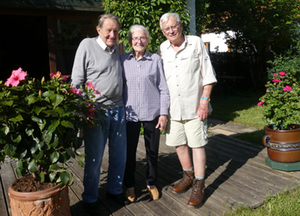
For the Nachmanns in 2025, gastronomy is already a thing of the past. As are the trips to their daughters in South Africa and Spain. And finally, since last year, the courier trips for the customers of daughter Sissi's “Markthalle” on Lake Tegernsee.
Fritz and Marianne Nachmann, the last living luge pioneers from the podium of the first World Championships, are enjoying their retirement in their little house in the Tegernsee Valley, beautifully situated at the edge of a forest. With admirable vitality, countless beautiful memories, and they “are grateful for every day that God still gives us”.
The former sports reporter is also grateful for the 70 years of FIL Luge World Championships. The sport of luge and the acquaintance with its protagonists have been a gift for him for decades.
A guest article by Klaus Angermann
Pictures Klaus Angermann, private photos and archive Bert Isatitsch from “100 years of Luge”








